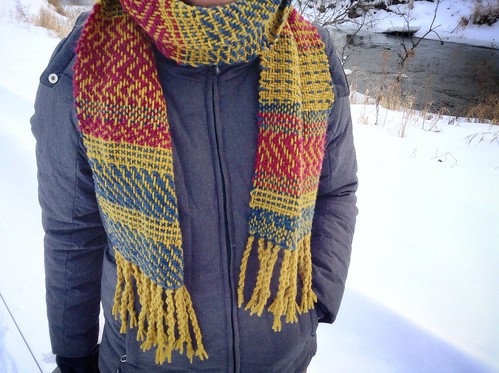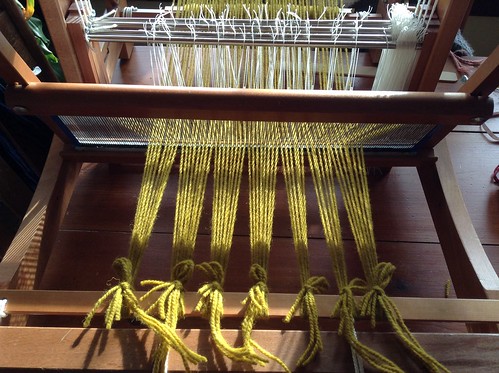Quite awhile ago, in fact nearly three years ago, I posted what I thought was an impressive list of all the little weaving and knitting looms I had accumulated up to that time. It was just about then I started becoming interested in weaving, and I was making a pretty clear switch from knitting to weaving. I still do an occasional knitting project, but most of my time is spent in weaving world. So, maybe it's time for an updated list? I think it's interesting that all of the looms from my old list could have probably been stored in one medium-sized plastic bin, but I still thought it was excessive.
Then:
- The Knifty Knitter round loom set (four looms)
- The Knifty Knitter flower loom and spool knitter (two looms)
- The purple Knifty Knitter rectangle loom
- Five 4" Square Looms: Two 4" Weave-its, One 4" Simplex loom, One 4" Hazel Rose Multiloom, One 4" Wonder Weave
- One Weave-it Rug loom
- One Regular Gauge hat loom
- One 24" Homestead Hideaway triangle loom
- Two potholder looms
- One extra fine gauge DecorAccents oval sock loom
- Three small flower looms
Now… (I've kept every one of those, plus added a few.)
- Glimakra Emilia rigid heddle loom 18" (with stand, extra heddles, etc.)
- Erica 25" rigid heddle loom
- Kessenich 14" two harness table loom
- Peacock 12" two harness table loom
- Louet W30 12" eight harness table loom
- Ashford 16" four harness table loom
- Soon-to-arrive 7' modular triloom
- Schacht inkle loom
- A teeny tiny wooden rigid heddle loom called a Samuel Gabriel loom
- Two more Weave-Its. (Why stop? They jump into my hands at antique stores.)
- Two Authentic Knitting Boards (10" and 28") plus the extenders for weaving
- Another Wonder Weave ($5! I bet you couldn't resist, either.)
- A 1940's blue plastic EZEE Knitter fine gauge loom
- A homemade wooden knitting rake
- A homemade round hat knitting loom
- A couple more daisy wheel flower looms
- A backstrap loom, made by me (For the record, this is the only loom I actually made that works, and yes, it's essentially four sticks and some yarn.)
Okay, we've gone way past the medium plastic bin storage idea!
For some reason–and not just because I'm running out of room in my tiny 8'x9' office–with the recent purchase of the 7' triloom, I feel I've actually come full circle. The first looms I had an interest in were the 4" square looms and the little Wonder Weave rigid heddle loom. I then bought my first triloom. Little did I know that those simple looms would teach me the basics of weaving. From there, I let things slide, weaving-wise, until the next fall, about a year later, when I suddenly had an urge to buy a "real" loom. But first, with my inquisitive nature and with some helpful words from a Ravelry weaver, along with Laverne's fantastic series on backstrap weaving at Weavezine, I put together a backstrap loom (and chiseled my hand in the process!), and figured out lifting patterns for plain weave, weft-faced projects. It was about five months later that I bought the Emilia loom.
My looms, every one, are still portable and small enough to fold up and store on a shelf or under the desk. So, my little saying on the top of my blog, "weaving and knitting on small looms," still holds water. (Do I sound a little defiant?) And yet, I think I really started weaving because I wanted to follow the fibers visually and figure out how structure was created. If you've ever seen a triloom, you'll know the weaver walks the yarn from side to side, hooking it onto opposing nails and weaving over and under the horizontal threads that are created in the process. It's called continuous weave, where the warp and weft are woven at the same time. It's not fine weaving with silken threads, but it suits me. (And if I want to use silken threads, well, I just fire up the little Louet W30!!)
With all that said, I have two looms in the mix that will probably need new homes, the Peacock and the Kessenich. Both also need some work, but I'll post more about that in the future if I decide to wave goodbye.


